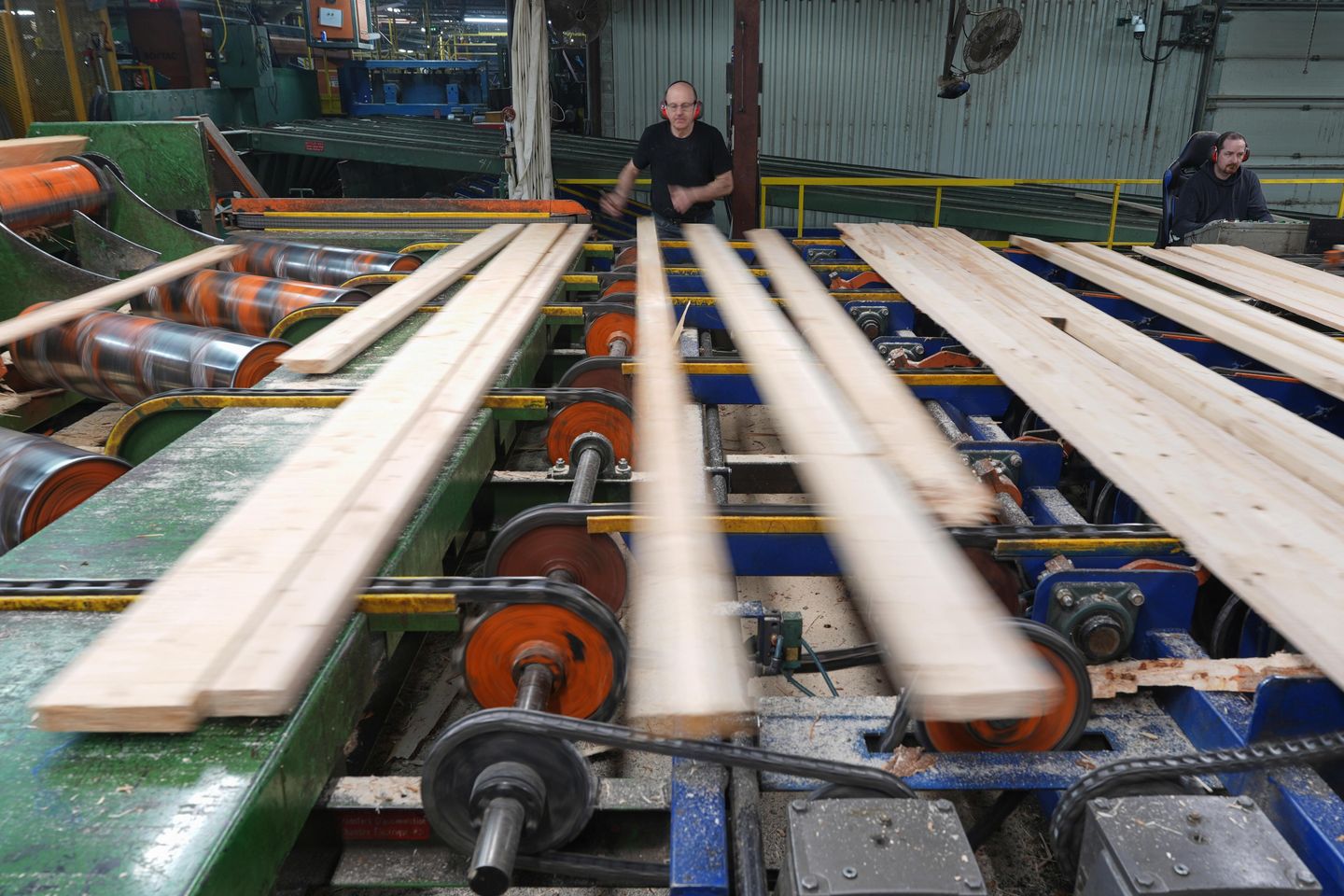
The U.S. construction market is a demanding one, consuming at least 50 billion board feet of lumber each year.
Yet domestic production is meeting only 70% of that demand, forcing the U.S. to close the gap by importing the rest, mainly from Canada.
President Trump wants to change that, saying the U.S. has plenty of trees for timber, only to be hemmed in by regulatory burdens and slow environmental reviews.
He’s directing the government to cut red tape around timber production and boost sales from trees on public lands.
Mr. Trump is pairing that with an investigation into whether U.S. reliance on imported lumber is a national security concern, setting the table for new tariffs on Canadian lumber as part of his get-tough trade strategy.
“We don’t need their lumber. We don’t need anything that they give. We do it because we want to be helpful but it comes to a point when you just can’t do that,” Mr. Trump said about Canada in March.
Lumber analysts say the U.S. has relied for decades on high-quality spruce pine from Canada, particularly British Columbia, so big changes wouldn’t happen overnight.
“We don’t have the lumber production capacity. The U.S. would have to build 70 new sawmills to make up the difference. A new sawmill costs roughly $250 million to build and takes two years,” said Pete Stewart, CEO of ResourceWise, a data analysis and research firm that studies forest products.
Mr. Stewart said tree growth in the U.S. Northwest is roughly equal to harvests, so those areas could not satisfy more of the domestic demand unless the U.S. Forest Service released vast amounts of timber for harvest.
Mr. Trump seems willing to try. His order directs the Forest Service, the Department of the Interior and other agencies to boost timber sales from public lands.
“The United States has an abundance of timber resources that are more than adequate to meet our domestic timber production needs, but heavy-handed federal policies have prevented full utilization of these resources and made us reliant on foreign producers,” the order says.
Southern forests from Virginia to eastern Texas, meanwhile, tend to grow 30% more trees than demanded by sawmills.
“The area where it could be enlarged could be the southern states. Lumber takes time to grow. They could increase it on a one-time basis but then they need to have the continuing growth,” said Gary Hufbauer, a nonresident senior fellow at the Peterson Institute for International Economics, or PIIE.
Softwood lumber is a critical component of home building. Canada satisfies roughly a quarter of the U.S. demand for the material, so attempts to make the U.S. fully reliant on its own trees would be a major shakeup.
Canada is “a close neighbor, it obviously has good logistics to the U.S.,” Mr. Stewart said. “It’s just the way the market’s operated.”
Timber professionals in Canada point to the quality of their products.
“Canada provides high-quality lumber, which U.S. consumers have a strong preference for,” said Kurt Niquidet, president of the B.C. Lumber Trade Council.
He said Canada’s main lumber product – spruce pine fir – doesn’t warp or twist and is ideal for framing homes.
“It has a good reputation among homebuilders for framing homes as compared to U.S. species such as Southern Yellow Pine,” Mr. Niquidet said.
But there is a long-running dispute between the U.S. and Canada over whether the Canadians unfairly subsidize their supply by charging timber cutters a relatively low fee to cut from publicly owned forests.
U.S. timberlands are mostly in private hands in states like Georgia, Alabama, the Pacific Northwest and Maine, and private forest owners tend to charge higher prices for harvesting trees when demand is strong, according to the PIIE.
“These differences have led to a succession of antidumping actions by the U.S., despite the desire of U.S. homebuilders to purchase lower-priced lumber from Canada,” the institute says on its website.
The National Association of Home Builders said it was glad to see exemptions for lumber imports in Mr. Trump’s latest tariffs on Canada, Mexico and other nations.
Still, the Commerce Department has imposed a 14.5% tariff on Canadian lumber since 2017 and recently published plans in the Federal Register to more than double that rate.
On top of that, Mr. Trump ordered his team to investigate whether unfair subsidies or foreign support for timber industries have resulted in a flood of imports that threaten national U.S. security.
The “Section 232” probe into lumber, like similar inquiries into pharmaceutical and semiconductor imports, could set the table for additions to Mr. Trump’s menu of tariffs on goods from other nations.
“It’s clear we are not out of the woods yet on the possibility that Canadian lumber tariffs could run even higher than 34.5% later this year,” the home builders association said.
Homeownership is already out of reach for many Americans, so anything that increases the cost of houses, even on the margins, could be a hot-button issue.
“It’s a political issue, it sways voters,” Mr. Stewart said.
Mr. Trump’s executive order on national security says lumber is critical for the civil construction industry and military procurement.
It asks whether there is enough domestic supply to reduce imports and “whether additional measures, including tariffs or quotas, are necessary to protect national security.”
Section 232 investigations must be completed within 270 days.
“Canada has a bullseye on it here,” Mr. Stewart said.
At the same time, he said it is hard to say with “a straight face” that Canadian lumber poses a national security threat.
“We are importing from one of our most friendly allies and neighbors,” he said. “How does lumber impact national security? Obviously tangentially, but not really. So I think that’s going to be a tough battle.”












